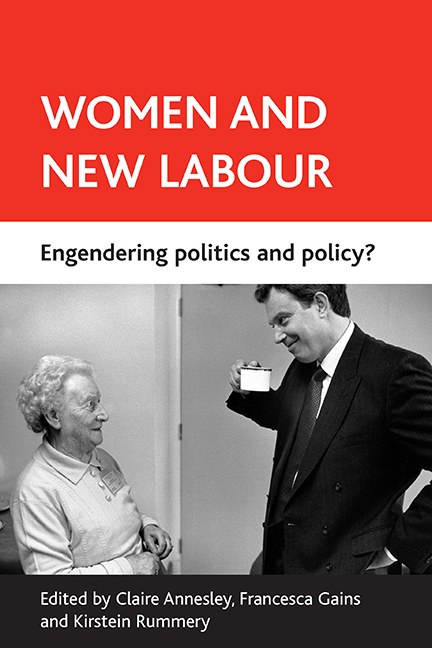seven - New Labour policy and the gender pay gap
Published online by Cambridge University Press: 15 September 2022
Summary
Introduction
This chapter explores the effects of labour market policy under the New Labour government on women's pay. Long-run trends towards a closing of the gender pay gap in the UK have stagnated in recent years and this has provoked considerable debate about the role of labour market policy interventions to improve women's earnings position. As argued elsewhere in this book, the appointment of a Women's Minister, the establishment of the WU (renamed as the WEU), the campaigning role of the WBG and an apparent concern within New Labour to appeal to women voters have led some observers to proclaim a feminisation of the policy platform. In this new ‘gender sensitive’ environment, this chapter explores a range of policy interventions that have directly or indirectly shaped women's pay. Certain policy changes have been presented by government as beneficial – namely, the NMW, strengthened employment protection for part-time workers, extended maternity leave provision, Working Tax Credits, gender pay reviews in the public and private sector and new harmonised systems of pay setting for public sector workers. But in practice, the government's policy interventions have only made a small contribution to closing the gender pay gap, and the marginal improvement in the relative position of low-paid women workers has been far less than anticipated.
The chapter begins with a brief review of empirical trends in women's relative pay. Against a backdrop of limited improvement in gender pay equality, we then analyse the government's response along three dimensions: the role of the WEU and special review bodies; specific labour market policy (both direct, such as the new gender duty in local government, and indirect, such as the NMW); and changes in public sector pay.
Trends in the gender pay gap
Analysis of earnings data over the last 20 years provides an essential backdrop to the question of how effective the New Labour government has been in closing the gender pay gap. Since the early 1980s, the UK has witnessed a narrowing of the gender pay gap among employees. Taking the average hourly pay of women in full-time and part-time work and comparing this to men's average full-time hourly earnings, women's relative pay increased from 66% in 1984 to 73% in 2003.
- Type
- Chapter
- Information
- Women and New LabourEngendering Politics and Policy?, pp. 133 - 154Publisher: Bristol University PressPrint publication year: 2007



